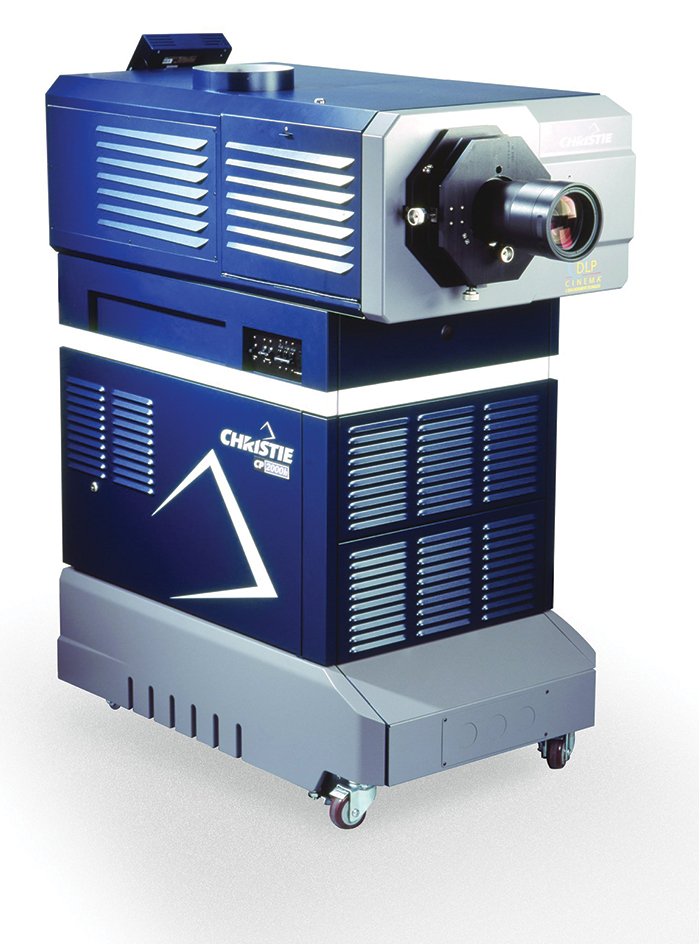Projector is a mechanical device used to beam an illuminated, enlarged version of a still or moving image onto a screen. A projector does this by focusing light through a system of lenses. The simplest projector consists of (1) a light source, (2) a reflector that focuses light rays, (3) a condensing lens, and (4) a projection lens.
Projector operation.
Projecting images bright enough for an audience to view requires a powerful light source. A lamp reflector inside the projector focuses the light rays from a lamp (light bulb) onto one condenser lens or more. A condenser lens intensifies the light, focusing it on the image object, the item to be enlarged on the screen. The image object may be transparent, such as photographic images on film, or opaque (allowing no light to pass through), such as book pages, printed photographs, or even flowers.

To cast an image of a transparent image object onto a screen, a projector passes light through the object directly to a mirror, which directs the light to the projection lens. To cast an image of an opaque object onto a screen, a projector reflects light off the item to the projection lens. The lens enlarges and focuses the image and projects it to the screen.
Projector lamps and condenser lenses generate high heat. For this reason, a fan system is an important part of a projector. Fans help to dissipate heat, thus protecting the image object and the equipment from heat damage.
Types of projectors
include motion-picture projectors, slide projectors, overhead projectors, digital data projectors, and projection TV’s.
Motion-picture projectors
show photographic images stored on spooled transparent film. The projector displays 24 of these images per second. To the human eye, this action produces the illusion of fluid movement. Many movie theaters also have screens that show moving images from digital projectors.

Slide projectors
show the images from individual transparent photographs called slides. The slide is placed upside down between the condenser lens or lenses and one projection lens or more. The projection lenses invert the image.
Overhead projectors
project images from transparencies, clear plastic sheets with material printed on them. In one type, transparencies are laid on a clear, flat platen between a projector lamp and a projection lens system. In another type, transparencies are laid on a mirrored surface. A lamp grouped with the lens system shines light onto this surface. The light is reflected back to the lens system, which projects it onto the screen.
Digital projectors
show images or videos from digital (computer code) sources. Digital projectors can be connected to laptop computers or other electronic devices. They can project presentations, movies, TV shows, or electronic games onto a wall or screen, providing a much larger viewing area than a computer or television screen does. Most digital projectors use one of two technologies: (1) liquid crystal display (LCD), or (2) digital light processing (DLP).
In an LCD projector, light passes through liquid crystal panels before it is projected onto a screen or wall. The panels can be changed electronically to form the desired images (see Liquid crystal ).
DLP projectors use hundreds of thousands of microscopic mirrors to reflect light from the projector’s lamp. A computer chip precisely controls the movement of the mirrors, forming images.
Projection TV’s
combine a large view screen with a digital projection system in the rear of the set. They are also called rear-projection TV’s. Most use DLP technology.
See also Audio-visual materials ; Filmstrip ; Motion picture (The projector) ; Presentation software ; Projection screen ; Television (Display devices) .
